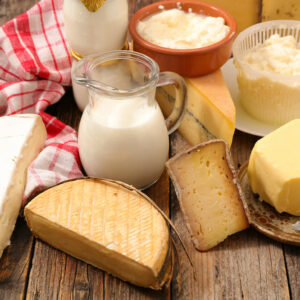7 easy ways to accessorize any outfit

Accessories tend to not only enhance your attire but also make you appear vibrant. Be it a casual chic look or an utter formal attire, adding some flash and bling just infuses life into your overall appearance. However, your accessories can perform their assigned role correctly only if perfectly styled. Here are some easy techniques and tips you can apply to up your fashion game and bring the best out of your outfit:
Do not pile up on accessories at a time
Most people commit the mistake of donning all the available accessories at once with an outfit. It must be noted that as far as accessories are concerned, less is always more. The purpose of using accessories is to highlight your outfit. However, if you adorn your outfit with several accessories like a watch, scarf, jewelry, sunglasses, hat, etc., all at once, none of them will stand out, making your outfit look cluttered and even awful.
Highlight neutral clothes with bold accessories
While neutral-colored clothes can look dull and understated, they are also the most perfect ones to be used as a field for experiments. If your wardrobe is filled with neutral colors like olive, navy, beige, white, or black, now is the time to boost them by pairing them up with some bold-colored accessories. Here are a few methods to do that:
Pair a navy or black dress with a thin hot pink or red belt.
Highlight your dull olive or khaki clothes using a flashy yellow or orange scarf.
Add some hue to your colorless white blouse by pairing it with big drop earrings or a multicolored statement necklace.
Don’t be too matchy
While it could be tempting to pair up the blue polka dots of your dress with some matching blue shoes, a blue necklace, and blue earrings, it would make the outfit too predictable, boring, and even childish. Add some shocking yet suitable accessories to make the outfit appear attractive, which will also showcase your creativity in terms of style. For example, if you are wearing purple attire, accessorize it with something lemon or mustard colored. Do not opt for anything that has a purple hue.
Play up a particular color of your attire
If your attire is a multicolored one, accessories can accentuate its appeal by letting you highlight one of the understated hues of your outfit. For example, if you are donning a patterned black dress with small flowers, wear a pair of ceramic bangles to match the green hue of the flowers’ leaves. When you highlight such understated colors, it acts as a thread between your attire and accessories, making your look complete and elegant.
Maintain the size equilibrium
One of the most significant rules of accessorizing outfits is to keep an account of their sizes. If you are wearing large dangling earrings, make sure that your neck remains light with a small necklace or no necklace at all. Similarly, if your dress has an interesting design near the collar, you won’t like to don a big scarf and cover the design in the process. The idea is to make one element the star of your appearance. It may be your dress, necklace, hat, scarf, or earrings. This will help you achieve a balanced and elegant look.
Select those accessories that highlight your features
Accessories are meant to enhance not only your outfits but also your facial and bodily features. Well-opted accessories can make your neck appear slender, calves appear more defined, and your legs look longer. For instance:
Donning large hoop earrings can accentuate the angles of your cheekbones.
Shoes with height can make your long legs look endless.
Long chain necklaces can highlight your collarbones.
Make bold makeup your accessory
If you swipe your lips with a knockout red lipstick or line up your eyes with a bold cat eye look, there’s nothing much required to accessorize your outfit. Your makeup itself will serve as an accessory. Just keep in mind the color of your dress and ensure that your makeup complements it such that your look has the perfect finish. Here are some other surprising makeup hacks that can accessorize your outfits:
False eyelashes
Nail art and nail polish
Colored contacts and glasses
Tattoos
Hair weaves or extensions
The bottom line
Accessories are those magic wands that have the power to transform even the dullest of outfits into a style statement. And if your outfit is already very cool, accessorizing it here and there can add to its outstanding appearance.
However, the only thing you must take care of is the rules. Take out some time to study and understand the theory of different colors, current as well as timeless fashion trends, and makeup rules. Apply them to experiment with your wardrobe. With a bit of practice, you will soon become a master of accessorizing.
Also, ensure to keep specific accessories handy in your wardrobe. These include everyday earrings, statement earrings, pendants, long chain necklaces, scarfs, belts, bags, jackets, watches, and some bracelets. They will help you to try out new appearances and set your style statement. Remember these tips the next time you style yourself.



